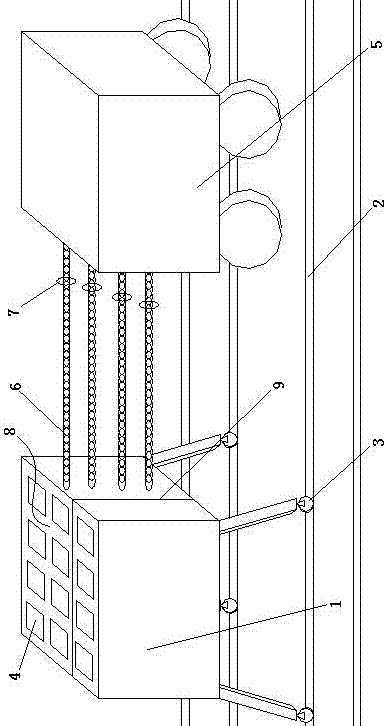Windproof sliding simulation system for crane under circumstance of deviation of center of gravity
A technology that deviates from the center of gravity and simulates the system. It is applied to the testing of machines/structural components, measuring devices, and instruments. It can solve the problems of inability to do complex detection, limited detection movement, and limited pushing force, length, and duration of the basic platform, etc. question
- Summary
- Abstract
- Description
- Claims
- Application Information
AI Technical Summary
Problems solved by technology
Method used
Image
Examples
Embodiment Construction
[0021] The present invention will now be further described in detail in conjunction with the accompanying drawings and embodiments. These drawings are all simplified schematic diagrams, only illustrating the basic structure of the present invention in a schematic manner, so it only shows the composition related to the present invention.
[0022] Such as figure 1 with figure 2 As shown, a simulation system for anti-wind sliding when the center of gravity of the crane deviates, including: two parallel tracks 2 and a test trolley 1, the four rollers 3 provided on the test trolley 1 are arranged on the two tracks 2 in pairs , also includes an elastic traction device, the distance between the two rails 2 can be adjusted, the carrying platform 8 provided on the top of the test trolley 1 is provided with a telescopic structure 9 in the width direction, and several counterweights 4 fixed seats are provided on the carrying platform 8 , The roller 3 is provided with a braking device. ...
PUM
 Login to View More
Login to View More Abstract
Description
Claims
Application Information
 Login to View More
Login to View More - R&D
- Intellectual Property
- Life Sciences
- Materials
- Tech Scout
- Unparalleled Data Quality
- Higher Quality Content
- 60% Fewer Hallucinations
Browse by: Latest US Patents, China's latest patents, Technical Efficacy Thesaurus, Application Domain, Technology Topic, Popular Technical Reports.
© 2025 PatSnap. All rights reserved.Legal|Privacy policy|Modern Slavery Act Transparency Statement|Sitemap|About US| Contact US: help@patsnap.com


